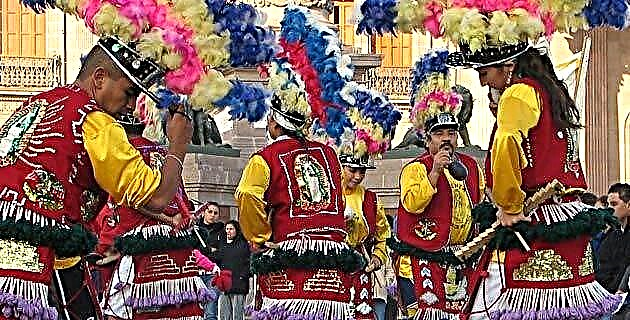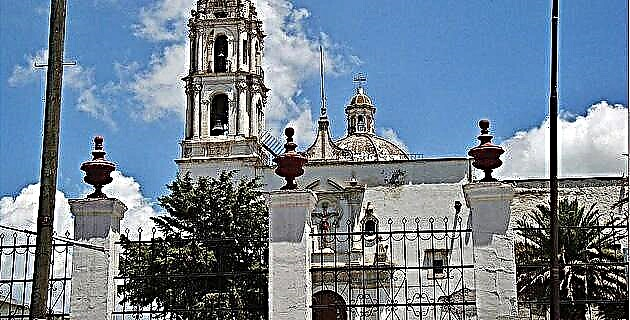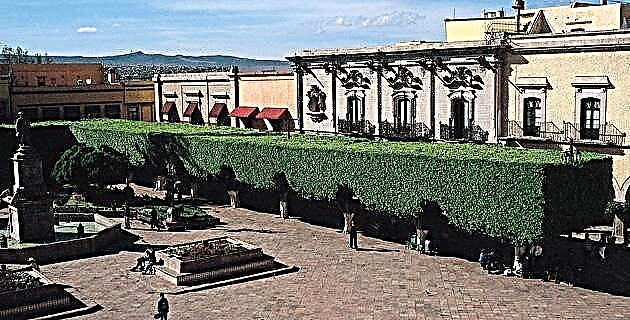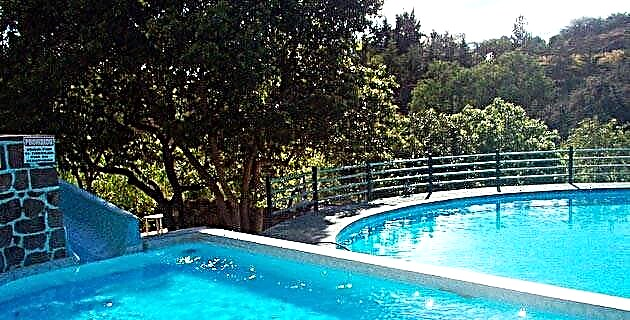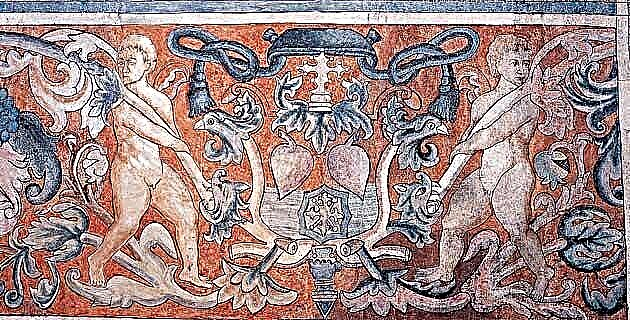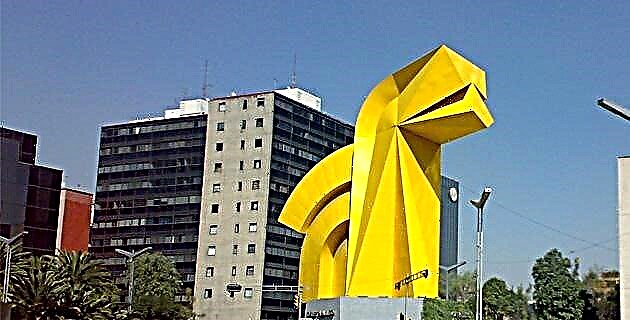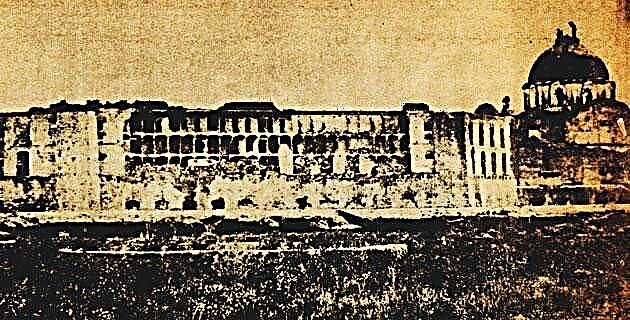
The doctor and teacher Sebastián Roldán y Maldonado, by will, gave in 1735 his wealth of 26 thousand pesos for missions of the Jesuits in the New Spain world.
His sister, Mrs. Ángela Roldán, widow of H. (O) rdeñana, years later, in 1743, determined to add 50 thousand pesos to his brother's legacy for the same purpose. The superiors then decided to acquire in Puebla the land adjacent to the Plaza de Guadalupe to build the church and school of San Francisco Javier, the last important work of the Society of Jesus in that city and in Mexico before their expulsion.
Between December 1 and 13, 1751, the opening of the church and school was held to, like the one of San Gregorio de México, impart Christian doctrine and first letters among the natives, carry out missionary work in the neighborhoods of Angelópolis and in the Sierra de Puebla, as well as to train Jesuits in natural languages. In its early years, it had more than 200 students.
There he worked as an Indian worker from 1761, according to records, the most famous of the personalities of his time: Francisco Javier Clavijero (1731-1787), important and respectable Jesuit in the history of ideas, precursor of our dependence, initiator and exalter of our strong indigenous cultural legacy, a reformer of the modern philosophy of Mexico and the teaching of science, due to its “understanding of the homeland as a reality different from Spain” and for its permanent and sensitive lesson in love for what is ours.
Clavijero had already been in Puebla and, years ago, in San Jerónimo, San Ignacio, EI Espíritu Santo and San Ildefonso, determinants in his humanistic training. He returned to San Javier after having discovered the wonderful legacy that Carlos de Sigüenza y Góngora had left at the Colegio de San Pablo de la Vieja México-Tenochtitlan, surely attracted by the indigenous greatness, the cultural roots of Mexico. It is assumed that this Jesuit learned Nahuatl in San Javier, which would allow him to write his fundamental Ancient History of Mexico in exile.
Undoubtedly, his stay in Puebla contributed to the forging of this remarkable personality, who passed from Angelópolis to Valladolid (Morelia), where later his teachings influenced the formation of national figures such as Miguel Hidalgo y Costilla.
The church of San Javier, built in the eighteenth century, was one of the most beautiful buildings of the Ignatian order in Puebla, its decoration is of all taste, its arrogant dome has a single tower, its beautiful images of the facade of three bodies of a whimsical Doric, says Marco Díaz. Its arcades and patio were transformed anarchically in 1949, leaving only a side entrance of interesting shapes.
In the apse there was a gilded altarpiece of exquisite and exquisite workmanship, in the center of which was placed, under a beautiful pavilion of the same size, a beautiful effigy of Saint Francis Xavier. According to Dr. Efraín Castro, the authors of this altarpiece are the same ones who made the one in Tepozotlán: Miguel Cabrera and Higinio de Chávez.
The temple was abandoned with the expulsion of the Jesuits in 1767; 28 years later, in 1795, there is talk of its great deterioration and the following year Antonio de Santa María Inchaurregui comments on its repair. Currently the final destination of its artistic riches is unknown, such as the altarpieces with the figures of Saints José and Ignacio and notable Guatemalan pieces. On the cover of San Javier, when cleaning its stones, the impacts of shrapnel received at the Puebla site in 1863 emerged as silent witnesses.
By virtue of a law issued by the Congress of the Union, on January 13, 1834, San Javier became the property of the Government of the State of Puebla, and it was then that the new State Penitentiary was built next to the temple and college in accordance with with the plans of the great Puebla architect and renovator José Manzo (1787-1860), in the manner of the Cincinnati Prison. This project, very advanced in its time, included workshops for the rehabilitation of inmates that kept them active and provided means of support for their families.
The initial merit of this work corresponds to General Felipe Codallos, governor of the state between 1837-1841, who laid the first stone on December 11, 1840. Construction progress was remarkable until 1847, when it was interrupted and seriously affected by reason of the American intervention. In 1849, with the governor Juan Mújica y Osorio, the works were resumed, but a new intervention, now the French one, again suspended construction.
After the sublime victory of May 5, 1862, and its occupation as a barracks, Joaquín Colombres from Puebla converted the Penitentiary into Fort Iturbide for the defense of the city, becoming the heroic siege of 1863. San Javier, for its In part, from March 18 to 29 of that year it was a very important bastion where the Mexican troops wrote one of their best epics, although the building was almost totally destroyed by the bombardment.
A year later, in 1864, a strong earthquake significantly damaged the prison complex and the San Javier building, from which its only tower fell.
On December 13, 1879, a group of Pueblans undertook the task of continuing and completing the great work, forming a reconstruction committee that General Juan Crisóstomo Bonilla (governor from 1878 to 1880) sponsored by decree of the State Congress. The works began on February 5, 1880, under the direction of the Puebla architect Eduardo Tamariz and Juan Calva y Zamudio, who respected the original guidelines of José Manzo.
With the later governors of the entity (generals Juan N. Méndez who ruled in 1880 and Rosendo Márquez who did it between 1881 and 1892) the endless work was concluded. The reconstruction was almost complete: men's and women's apartments, vaults, staircases, offices, 36 pavilions and half a thousand cells.
On April 1, 1891, the death penalty was abolished in the state -first in the country-, the Board for the Protection of Prisoners was created and various reforms were made to the Criminal Code of the entity, and the next day Porfirio Díaz, president of The Republic put the Penitentiary into service.
Regarding the expenses of its construction, it is worth mentioning the following data: in 1840, a special contribution of 2.5% was established on the sale of liquors, and in 1848 the pulquerías were set a quota of 2 reales se manarios, " taxes ”that were never sufficient for the great work. From 1847 to 1863, 119 540.42 pesos were invested and from 1880 to 1891, 182 085.14 were spent.
The municipalities covered monthly the maintenance of the prisoners from their region. The annual expenditure of the Penitentiary in the first years was more than 40 thousand pesos. In 1903, doctors Gregorio Vergara and Francisco Martínez Baca established an anthropometric and criminalistic laboratory at the institution, as well as a museum with more than 60 skulls of inmates who died in prison, currently under the custody of the INAH.
The San Javier building had various uses: barracks, warehouse, military hospital, hospital for epidemics, fire station, municipal electrical department and dining room of the Penitentiary, for which it was gradually destroyed. In 1948 a state school was installed in the courtyard and arcades of San Javier, which seriously damaged the architectural complex, and in 1973 and recent years its vaults were seriously affected.
The Puebla Penitentiary was operating until 1984, the year in which the governor of the state, Guillermo Jiménez Morales, held a popular consultation to leave the decision of the use and destination of these historic buildings in the hands of the people of Puebla, in one of which it shone the talent of Francisco Javier Clavijero, our indigenous languages were spread and important educational work was carried out, in addition to the bizarre defense of national integrity in both, at least on two occasions. Unanimously, the people of Puebla asked the Executive to remodel the Penitentiary and rescue San Javier to dedicate them to cultural activities and as rich testimonies, essential to keep the Puebla's historical memory alive.

